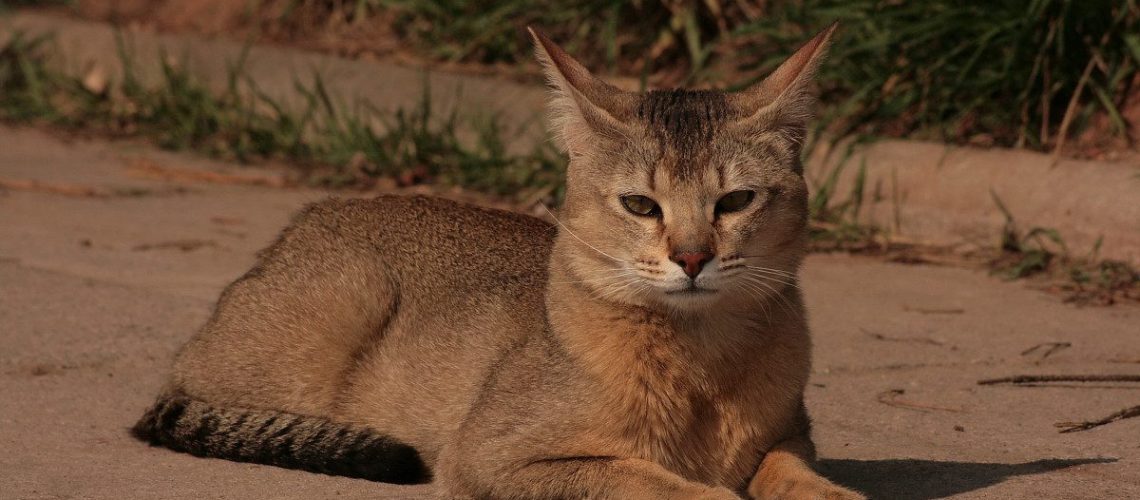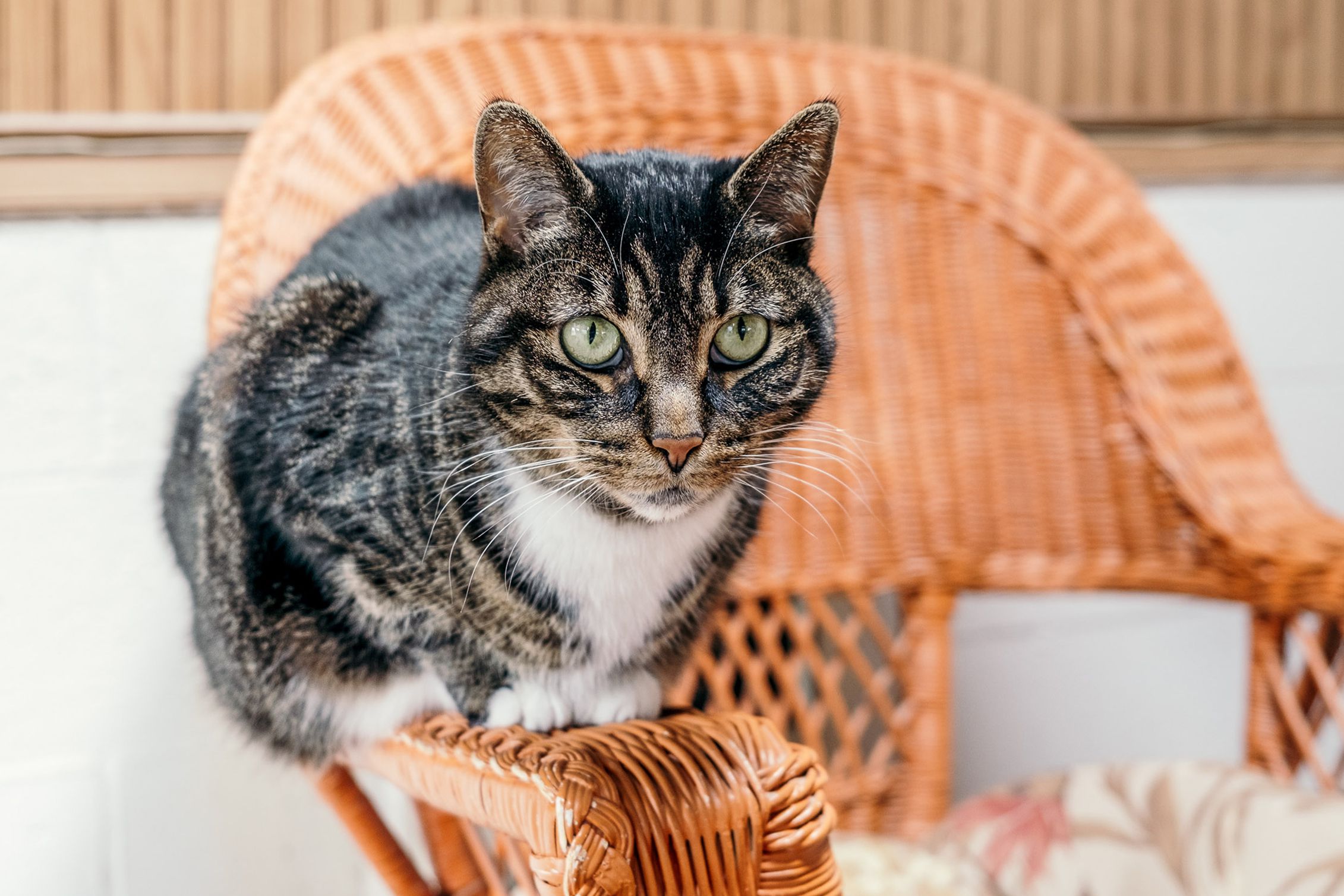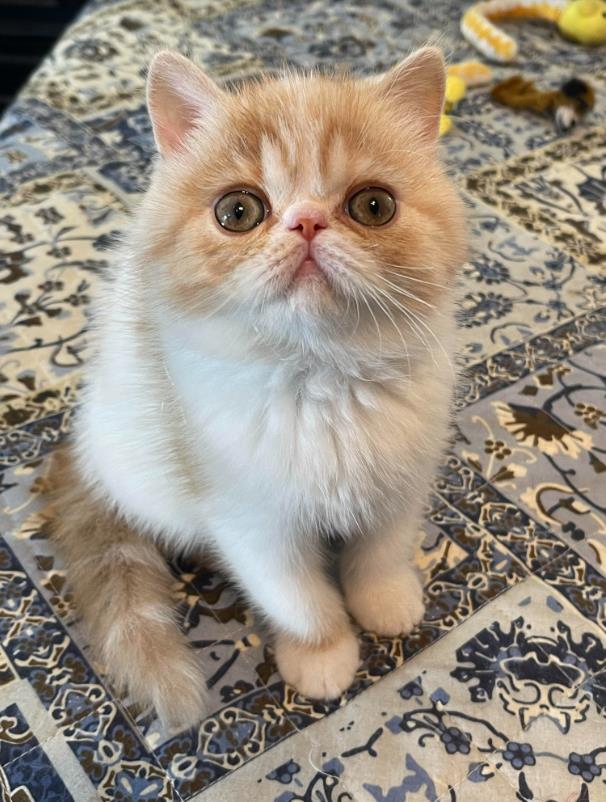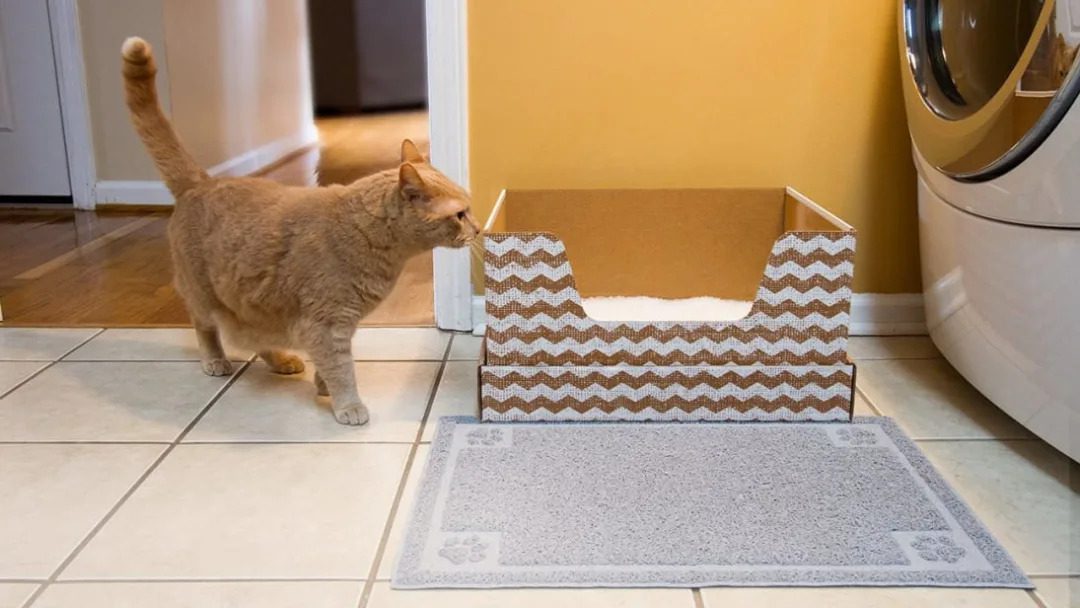Discover the untamed spirit of the jungle in your home with Chausie cats! These feline companions infuse an exotic touch, embodying the adventure and charm of their wild ancestors. Whether seeking a lively companion or a touch of wilderness, understanding Chausie cats is essential. Embark on this journey to transform your home into a jungle paradise. Unleash your inner explorer and embrace the magic that awaits!
Key Takeaways:
- Chausie cats have a wild and exotic appearance, resembling their jungle ancestors.
- They are a hybrid breed, resulting from the crossbreeding of domestic cats with jungle cats.
- Chausies are highly active and require plenty of mental and physical stimulation to prevent boredom.
- They are known for their intelligence and can be trained to perform tricks or even walk on a leash.
- Although they have a strong prey drive, Chausies can form strong bonds with their human families and enjoy interactive playtime.
What is a Chausie Cat and Where Does it Come From?
Chausie cats are a unique breed that originated from the crossing of domestic cats with jungle cats. This hybridization gives them their distinctive appearance and wild-like qualities. The name "Chausie" comes from the Latin name for the jungle cat, Felis chaus. These cats have a long history, with records dating back to ancient Egypt where they were revered for their hunting abilities.
Origins of the Chausie Cat
The Chausie cat's ancestry can be traced back to ancient times when domestic cats in Egypt mated with jungle cats. Jungle cats are native to parts of Asia and Africa, known for their agility and strong hunting instincts. Over time, these hybrids were bred selectively to create a breed that retains some of the wild characteristics while being suitable as a domestic pet.
Distinctive Features
Chausie cats have a muscular build and long legs, giving them an athletic appearance reminiscent of their wild ancestors. Their coat is short and dense, often displaying patterns similar to those found in jungle cats. They have large ears with tufts at the tips, enhancing their exotic look. These feline companions come in various colors, including brown ticked tabby, black grizzled tabby, and silver-tipped black.
List of Distinctive Features:
- Muscular build
- Long legs
- Short and dense coat
- Large ears with tufts
- Various color variations
The Jungle-Like Qualities of the Chausie Cat and Its Ancestry
The Chausie cat's ancestry plays a significant role in its behavior and temperament. Due to its hybrid lineage with jungle cats, these felines possess certain traits that set them apart from other domestic breeds.
Jungle-Like Behaviors
Chausie cats retain some of the hunting instincts and behaviors of their wild ancestors. They have a strong prey drive, which means they may exhibit stalking behavior and enjoy interactive play sessions. These cats are highly active and require plenty of mental and physical stimulation to stay happy and healthy.
Intelligence and Trainability
Chausie cats are known for their intelligence and trainability. They can quickly learn commands, tricks, and even how to walk on a leash. These felines thrive with positive reinforcement training methods that reward good behavior. With proper training, Chausie cats can become well-behaved companions who understand boundaries.
List of Jungle-Like Qualities:
- Strong prey drive
- Active and playful nature
- High intelligence
- Trainable with positive reinforcement
Are Chausie Cats Good Pets for Homes?
Chausie cats can make wonderful pets for the right owner. They are known for their intelligence, curiosity, and playful nature. Chausies are highly active cats that require plenty of mental and physical stimulation to thrive. They enjoy interactive play sessions and puzzle toys that challenge their problem-solving skills. However, due to their high energy levels, they may not be suitable for households with young children or elderly individuals who prefer a more relaxed pet.
Benefits of Owning a Chausie Cat
One of the main benefits of owning a Chausie cat is their unique appearance. These cats have a striking resemblance to their wild ancestors, with their tall ears, long legs, and muscular bodies. Their exotic appearance often attracts attention and makes them stand out among other domesticated cats.
Another advantage of having a Chausie cat is their loyalty and affection towards their owners. While they may initially appear aloof, once they form a bond with their human companions, they become devoted and loving pets. Chausies are known to seek out human interaction and enjoy being part of the family.
Considerations Before Getting a Chausie Cat
Before deciding to bring a Chausie cat into your home, it's important to consider some factors. Firstly, these cats require ample space to roam and explore. They are not well-suited for small apartments or confined living spaces. Additionally, due to their high activity levels, they need regular exercise and mental stimulation to prevent boredom-related behavior issues.
It's also crucial to note that Chausies have strong hunting instincts inherited from their wild ancestors. This means they may have a higher prey drive compared to other domesticated cats. It's essential to provide appropriate outlets for this instinct through interactive toys or supervised outdoor time in safe environments.
Overall, if you are an experienced cat owner who can provide the necessary environment and stimulation, a Chausie cat can be a rewarding and fascinating addition to your home.
Unique Physical Characteristics of Chausie Cats That Make Them Stand Out
Chausie cats possess several distinctive physical characteristics that set them apart from other domesticated cats. These features contribute to their wild and exotic appearance.
One notable characteristic of Chausies is their tall ears. Their ears are larger than those of most domesticated cats, giving them an alert and attentive expression. The prominent ear size is inherited from their jungle cat ancestors, aiding in their exceptional hearing abilities.
Another striking feature of Chausie cats is their long legs. These cats have a lean and muscular build, with longer hind legs compared to other breeds. This physical trait allows them to jump higher and run faster, showcasing their agility and athleticism.

The coat of a Chausie cat is also unique. They have a short coat that comes in various colors, including black, brown ticked tabby, silver ticked tabby, or solid black. The ticked tabby pattern gives them a wild appearance similar to cheetahs or servals.
Overall, the combination of tall ears, long legs, and distinctive coat patterns make Chausie cats visually captivating and distinguishable from other feline companions.
The Role of Genetics in Chausie Cat's Appearance
The unique physical characteristics exhibited by Chausie cats are a result of selective breeding programs aimed at creating hybrids between domesticated cats and jungle cats (Felis chaus). Through careful breeding practices over generations, breeders have successfully developed the distinct look seen in modern-day Chausies.
Genetically speaking, the traits such as tall ears and long legs are influenced by specific genes inherited from both parent breeds. These genes control the growth patterns during development and determine the overall physical appearance of the cat.
It's important to note that while Chausie cats may resemble their wild ancestors, they are domesticated animals and should be treated as such. Their appearance may give them a wild allure, but their behavior and needs are still those of a domestic cat.
How Do Chausie Cats Behave Compared to Other Cats?
Chausie cats have unique behavioral characteristics that differentiate them from other domesticated cats. While they share some similarities with their jungle cat ancestors, they also exhibit typical feline behaviors common among all cat breeds.
One notable difference in Chausie cat behavior is their high energy levels. These cats are known for being active and playful. They require plenty of mental and physical stimulation to prevent boredom-related issues such as destructive behavior or excessive vocalization. Engaging in interactive play sessions and providing puzzle toys can help fulfill their need for stimulation.
Chausies are also highly intelligent cats. They possess problem-solving skills and enjoy engaging in activities that challenge their minds. This intelligence makes them quick learners, allowing owners to train them for tricks or agility exercises.
While Chausie cats can be affectionate towards their human companions, they tend to be more independent compared to some other cat breeds. They may not always seek constant attention or cuddling but will form strong bonds with their owners over time.
Understanding Chausie Cat's Wild Ancestry
The behavioral traits exhibited by Chausie cats can be traced back to their wild ancestry. The jungle cat (Felis chaus) is one of the parent species involved in creating the Chausie breed through selective breeding programs.
Jungle cats are solitary hunters known for their agility, athleticism, and hunting prowess. These traits have been passed down to Chausies, making them excellent climbers and jumpers. Their natural instincts drive them to explore their surroundings actively.
It's important to provide appropriate outlets for their hunting instincts through interactive toys and supervised outdoor time in safe environments. This helps satisfy their need for mental and physical stimulation while keeping them safe from potential dangers.
Understanding the influence of their wild ancestry allows Chausie cat owners to better appreciate and cater to their unique behavioral needs.
Ideal Living Environment for a Thriving Chausie Cat
Creating an ideal living environment is crucial for the well-being and happiness of a Chausie cat. These cats have specific needs that must be met to ensure they thrive in their surroundings.
Firstly, space is essential for a Chausie cat. They require ample room to roam, climb, and explore. A spacious home or access to a secure outdoor enclosure is highly recommended. Providing vertical spaces such as tall cat trees or shelves allows them to exercise their natural climbing instincts.
Chausies also benefit from having plenty of interactive toys and puzzle feeders. These help stimulate their minds and prevent boredom-related behavior issues. Regular play sessions with their owners are also important for bonding and providing mental stimulation.
Outdoor access can be beneficial for Chausie cats if provided in a safe environment. However, it's crucial to ensure they are protected from potential hazards such as traffic or encounters with other animals. A secure outdoor enclosure or supervised outdoor time on a leash can offer them the opportunity to experience the outdoors safely.
Lastly, creating a consistent routine with regular feeding times, play sessions, and litter box maintenance helps establish a sense of stability for Chausie cats. They thrive in an environment where they know what to expect and feel secure.
Challenges of Owning a Chausie Cat in an Apartment
While it's possible to keep a Chausie cat in an apartment, it presents some challenges due to their high energy levels and need for space. Apartment living may not provide enough room for them to fully exercise and explore.
To address this challenge, owners can create vertical spaces within the apartment using tall cat trees or shelves. These allow Chausies to climb and observe their surroundings from different heights. Regular interactive play sessions and puzzle toys can also help provide mental stimulation in a confined space.
It's important to note that Chausie cats may become bored or frustrated if their physical and mental needs are not adequately met in an apartment setting. Owners should be prepared to dedicate extra time and effort to ensure their Chausie remains happy and fulfilled in a smaller living environment.
Training Tips for Owning a Chausie Cat
Training a Chausie cat can be an enjoyable experience that strengthens the bond between owner and pet. These cats are highly intelligent and quick learners, making them receptive to training techniques.
One effective training method for Chausie cats is positive reinforcement. Reward-based training involves providing treats, praise, or playtime as a reward for desired behaviors. This approach helps motivate the cat to repeat those behaviors in the future.
When training a Chausie cat, it's important to use consistent cues or commands. Using short phrases or hand signals paired with rewards helps establish clear communication between owner and pet. Repetition and consistency are key to successful training outcomes.
Chausies respond well to clicker training, where a clicker sound is used as an immediate marker of correct behavior followed by a reward. This technique helps reinforce positive associations with specific actions or commands.
Socialization is another crucial aspect of training for Chausie cats. Early exposure to various people, animals, and environments helps them develop confidence and adaptability. Gradually introducing new experiences while providing positive reinforcement can help prevent fear or aggression-related issues later on.
Addressing Behavioral Challenges
While Chausie cats are generally well-behaved, they may exhibit certain behavioral challenges that require attention and training. Some common issues include scratching furniture, excessive vocalization, or aggression towards other pets.
To address furniture scratching, providing appropriate scratching posts or boards can redirect their behavior. Placing them near areas the cat frequently scratches helps encourage them to use the designated surfaces instead.
Excessive vocalization can be managed by identifying the underlying cause, such as boredom or anxiety. Increasing playtime and mental stimulation can help alleviate this issue. If the problem persists, consulting with a veterinarian or animal behaviorist may be beneficial.
Introducing new pets should be done gradually and under controlled circumstances to prevent aggression. Using positive reinforcement techniques during initial interactions and providing separate spaces for each pet allows them to acclimate at their own pace.
By implementing consistent training methods and addressing behavioral challenges promptly, Chausie cat owners can create a harmonious living environment for both themselves and their feline companion.
Special Considerations and Challenges of Owning a Chausie Cat at Home
Owning a Chausie cat comes with certain considerations and challenges that potential owners should be aware of before bringing one into their home.
One consideration is the need for mental and physical stimulation. Chausies are highly active cats that require plenty of exercise and interactive play sessions to prevent boredom-related issues. Owners must dedicate time each day to engage with their Chausie through play or puzzle toys.
Another challenge is the potential prey drive exhibited by Chausie cats due to their wild ancestry. They may have a strong instinct to hunt small animals or birds. It's crucial to provide appropriate outlets for this instinct through interactive toys or supervised outdoor time in safe environments.
Chausies also have specific dietary requirements. Their high energy levels necessitate a balanced diet rich in protein. Consultation with a veterinarian is recommended to ensure they receive proper nutrition based on their individual needs.
Additionally, owning a Chausie cat requires financial commitment. These cats may have specific health needs or dietary restrictions that can result in higher veterinary costs. Providing appropriate toys, scratching posts, and other supplies also adds to the overall expenses of owning a Chausie.
Lastly, it's important to consider the potential impact on allergies or sensitivities. Some individuals may be allergic to cat dander or have sensitivities to certain breeds. It's advisable to spend time with Chausie cats before committing to ownership to ensure compatibility.
By being aware of these considerations and challenges, potential Chausie cat owners can make an informed decision and provide the best possible care for their feline companion.
In conclusion, Chausie cats bring a touch of the wild into our homes with their jungle-like appearance. With their playful and affectionate nature, they make wonderful companions for those who want a taste of the exotic in a domestic setting.
What are the interesting facts about Chausie cats?
Despite the fact that Chausies are descendants of wild cats, they do not exhibit any wild behavior. Instead, they are highly sociable and have a pleasant disposition. They are extremely intelligent, curious, and remain active even as they grow older. Additionally, they are visually appealing.
What are the health problems with Chausie cats?
Chausies are known to have a tendency towards food allergies. However, overall, they are generally considered to be naturally healthy cats. It is important to maintain their healthy lifestyle and schedule regular check-ups with a veterinarian, as all cats can develop health issues at some point in their lives.
What is the Chausie mixed with?
The Chausie is a unique breed that results from breeding domestic cats with jungle cats. It is known for its majestic and wild appearance, as well as its friendly and affectionate nature towards humans. This rare breed has distinctive cheekbones and has preserved its ancestors' need for physical activity and independence throughout time.
How much does a Chausie cost?
The price of a Chausie kitten varies between $1,500 and $10,000 based on factors such as their lineage, upbringing, age, and gender.
What is the most feared cat in the world?
Regardless of the situation, a tiger is typically the most hazardous feline in its environment. If you would like to learn more about this formidable and solitary predator, one of the most lethal cats, you can find more information here on May 4, 2023.
Are Chausie cats good with kids?
According to Dr. Singler, Chausies are suitable for homes but not with young children. Their play style and behavior might be too rough for the safety of young kids. However, they can thrive in households without young children, particularly in the presence of other cats and dogs, as they prefer not to be left alone. (Source: Aug 24, 2022)

















